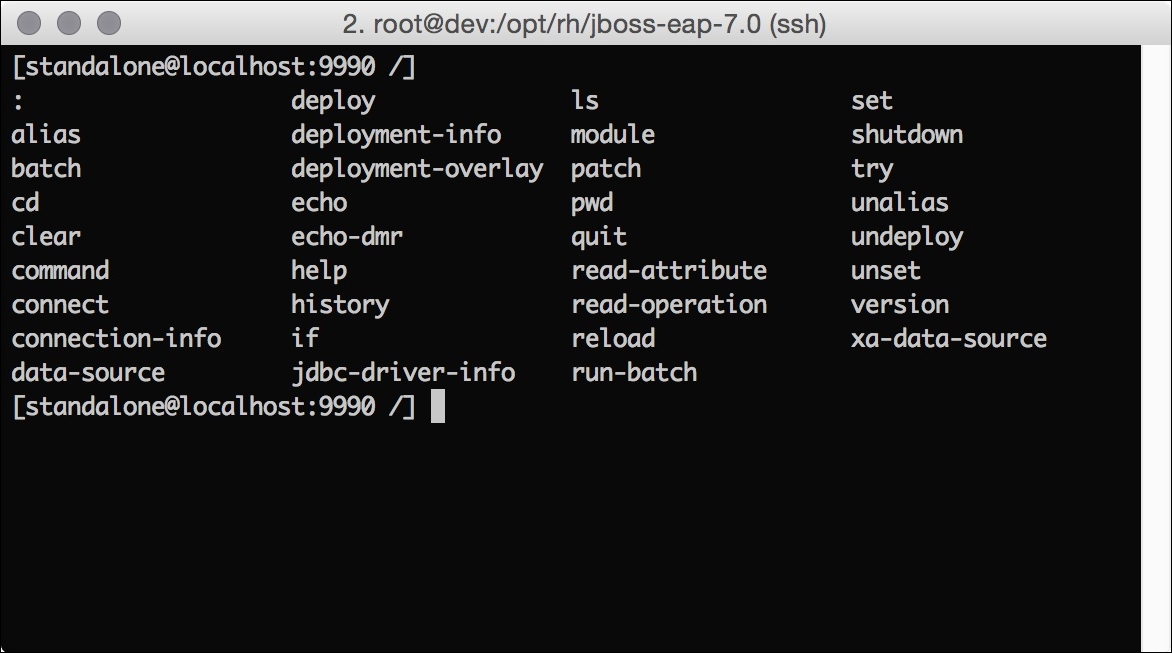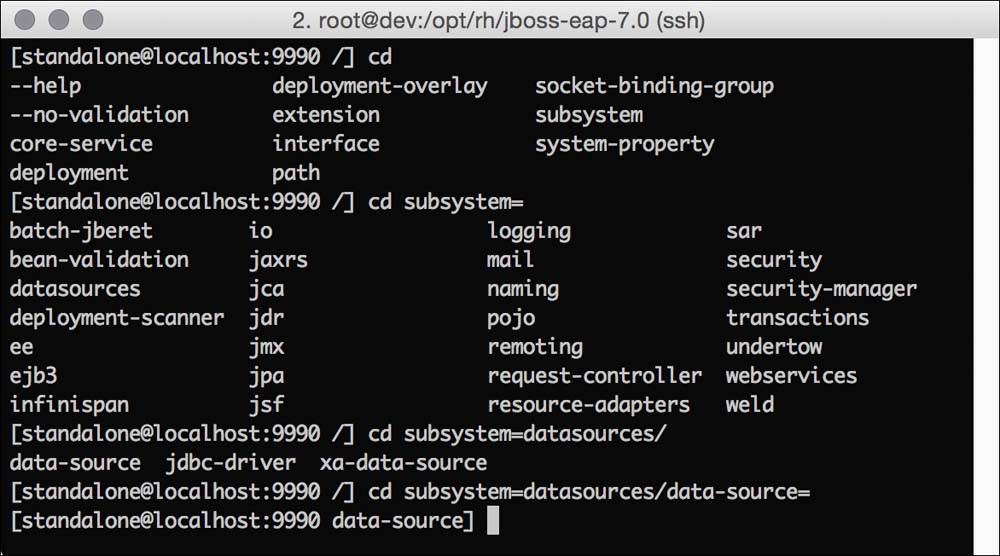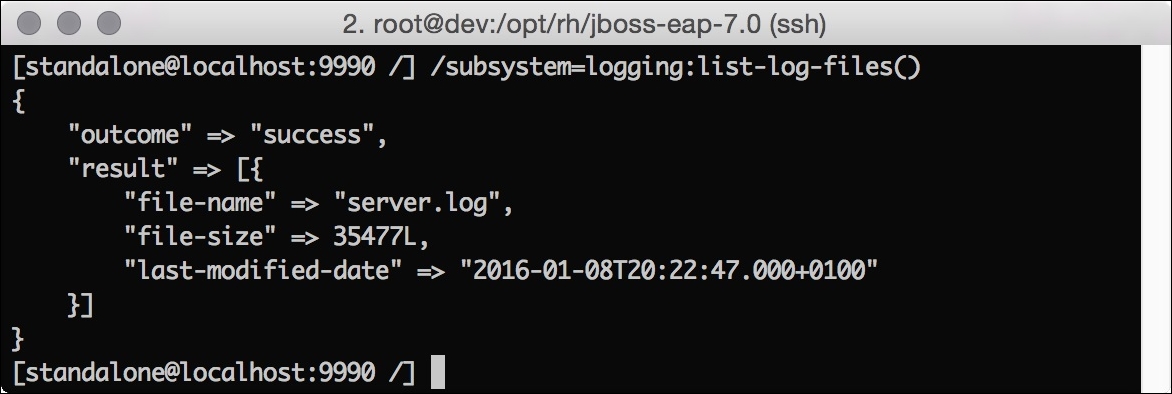- Mastering JBoss Enterprise Application Platform 7
- Francesco Marchioni Luigi Fugaro
- 276字
- 2021-07-14 10:07:45
Using the CLI
Within the CLI shell, there is a common and useful way to obtain the list of available commands and resources: the Tab key.
By hitting the Tab key on your keyboard, you can see all available commands and resources, with regard to the current context/resource you are in.
But first, let's define a resource for you.
Everything manageable is exposed via a tree of addressable resources. Resources expose attributes and operations. The concept is very similar to JMX Open MBeans, but note the following:
- Resources are organized in a tree
- Atomic multi-step operations are supported
- Operations across servers are supported
Hit the Tab key to see all the available commands and resources, as shown in the screenshot here:

The Tab key is also used for auto completion of commands and parameters.
You can navigate through the resources, as you would do with your filesystem, by invoking the cd command followed by the resource name, as depicted here:

As you can see from the previous example, the Tab key is very important to find your desired context or command.
There are also two special characters: the forward slash (/) and the colon (:). The first one is used to navigate through the context, as you do for folders. The second one, the colon, is used to invoke operations available for the resource you are in.
You don't need to first position in a context and then invoke methods in it, as follows:

You could just navigate through the resources and invoke resource methods in line with the CLI, as follows:

Now we will take a look at those commands that execute common tasks.
- 現(xiàn)代C++編程:從入門到實踐
- Python神經(jīng)網(wǎng)絡(luò)項目實戰(zhàn)
- 鋒利的SQL(第2版)
- 微信小程序入門指南
- Mathematica Data Analysis
- Java:High-Performance Apps with Java 9
- Python項目實戰(zhàn)從入門到精通
- Learning Node.js for .NET Developers
- Access 2010數(shù)據(jù)庫應(yīng)用技術(shù)實驗指導(dǎo)與習(xí)題選解(第2版)
- Solutions Architect's Handbook
- C語言程序設(shè)計實訓(xùn)教程與水平考試指導(dǎo)
- 創(chuàng)意UI Photoshop玩轉(zhuǎn)移動UI設(shè)計
- Python高性能編程(第2版)
- JavaScript語法簡明手冊
- Unreal Engine Game Development Cookbook